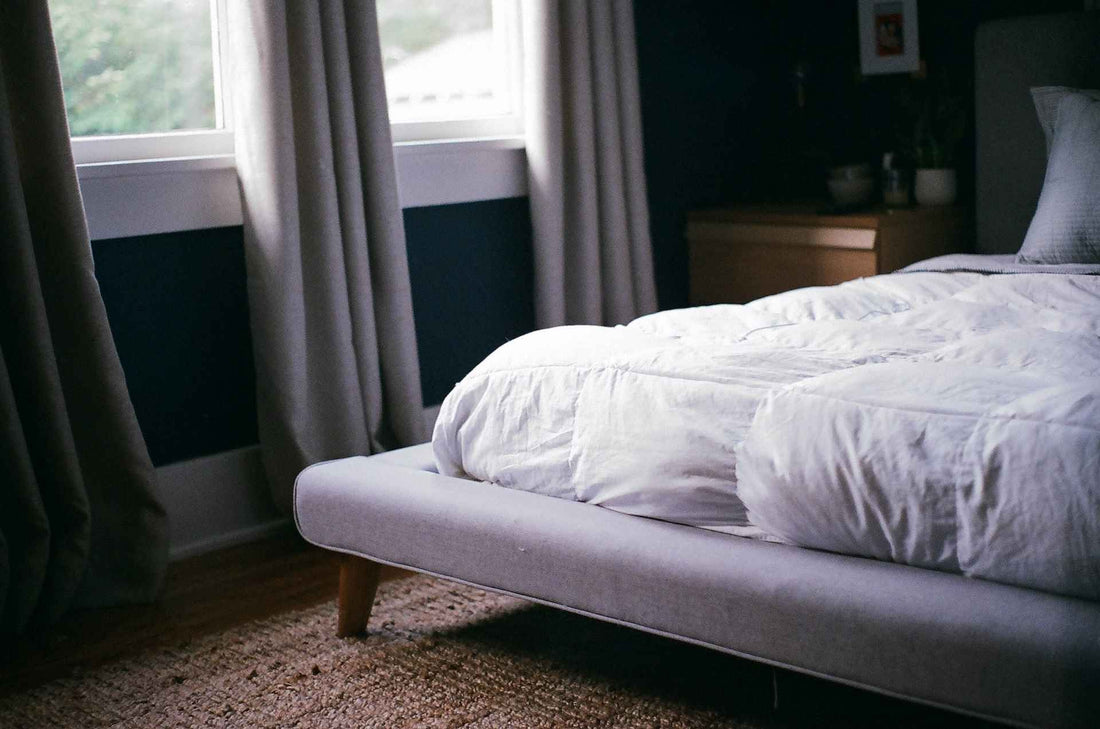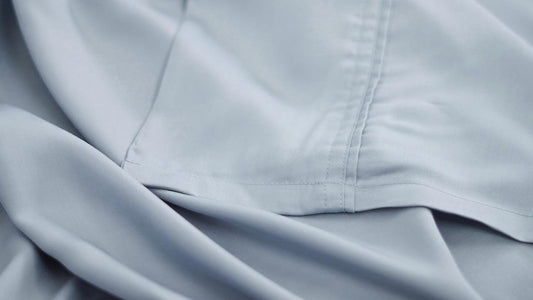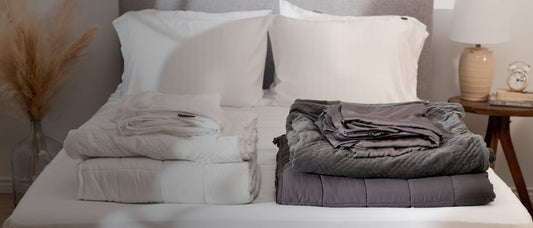If you’ve ever wondered “what goes inside a duvet cover”, a more helpful way of asking the question might be “what does a duvet cover actually cover?” After all, while you can technically use a duvet cover without its insert, it wouldn’t serve much purpose; the point of a duvet cover is to protect the integrity and structure of a duvet itself, and without the fluffy duvet inside, a cover ends up being more or less a very thin, non-insulated blanket.
However, you might be wondering what can go inside a duvet covers; is their use limited to duvets or can you insert a throw, a comforter, or anything else inside? Let’s take a look.
What is a Duvet Cover?
As you probably already know, a duvet cover is a protective layer that slips over a duvet insert or a comforter, much like a pillowcase covers a pillow. Whether you opt for a premium queen duvet cover or something else, duvet covers are used to give your duvet a specific aesthetic feel, but also serve a functional purpose in protecting your duvet from external damage.
What’s The Purpose of a Duvet Cover?
The primary purpose of a duvet cover is to protect the duvet insert, which isn’t just expensive, but can also be incredibly difficult - and lengthy - to clean. With a duvet cover protecting it, you’re safeguarded against stains, coffee spills, food marks and more - as well as substances that could harm the structure of the duvet, such as oil, dead skin, moisture, and bacteria.
Additionally, the purpose of a duvet cover also includes style and aesthetics; you can change your cover seasonally or whenever you want to refresh your bedroom's look, without having to replace the entire bedding set or give your furniture an expensive makeover.
What Do You Put Inside a Duvet Cover?
So, what can you put inside a duvet cover? In most cases, what you put inside a duvet cover is going to be a duvet, also known as a duvet insert; these inserts are typically filled with down, feathers, wool, or a synthetic alternative to give the insert its fluffy appearance and warmth-retaining properties. However, the type of duvet insert you choose might fluctuate based on your own personal sleeping habits, any allergies you may have, and - most importantly - the climate you live in:
- Down and Feather Inserts: Down (which is plumage taken from the underbelly of waterfowl) and feather duvets are one of the most popular options for insets, known for being both incredibly warm while also lightweight. However, they’re not recommended for those with allergies to animal fur, as they may trigger an allergic reaction or irritate the skin while sleeping.
- Wool Inserts: Wool is another natural, breathable material used for duvet inserts, and given its temperature-regulating properties, makes a great year-round option.
- Synthetic Inserts: While some might raise their eyebrows at the prospect of using synthetic inserts for their bedding, these duvets are incredibly popular, easy to care for, and ideal for those with allergies or those who prefer an alternative to animal products.
How to Properly Insert a Duvet or Comforter into a Duvet Cover

Whether you’re using your old cover or you’re unpacking your new premium king duvet cover set, putting a duvet cover on a duvet might be your least favourite housekeeping task (we’ve all been stuck in a duvet cover, too, don’t worry). Here’s how to simplify the process:
- Turn the Duvet Cover Inside Out: While standing in front of your bed, lay the duvet cover inside out on your bed, with the opening at the foot of the bed.
- Lay the Duvet on Top: Place your duvet or comforter on top of the inside-out cover.
- Secure the Corners: If your duvet cover has ties, secure them to the corners of the duvet - this helps keep the duvet in place inside the cover.
- Roll It Up: Starting from the head of the bed, roll the duvet and cover together towards the foot of the bed, almost as though you’re wrapping a tortilla.
- Invert the Cover: When you reach the end, invert the duvet cover around the rolled duvet, enclosing it.Unroll and Adjust: Unroll the bundle back towards the head of the bed, then shake and fluff to adjust the duvet inside the cover. And ta-dah, you’re finished!
The Bottom Line
Ultimately, there are no fixed rules that dictate what can and can’t go in a duvet cover; if you feel like throwing in your comforter during the warmer months, go for it! What is important, however, is not forgetting to take care of your duvet cover in the same way you’d take care of any other textile in your home; after all, you’re going to be sleeping against it, so it’s in your interest that it remains clean! You can take a look at our blog on how to wash a duvet cover for our how-to on keeping your duvet covers in tip-top condition.
FAQs
Can you use a duvet cover by itself?
Technically, you can use a duvet cover by itself, but it will lack the fluffiness and warmth of a cover with an insert. Some people choose to do this in warmer climates or during the summer months for a lighter bedding option.
Can you put a comforter in a duvet cover?
You can put a comforter inside a duvet cover, and this can be a practical way to change the look of your existing comforter while also protecting it, especially if you use it every day. The only point of contention here is sizing: make sure it fits well inside the duvet cover for the best appearance and maximum comfort, and to avoid the comforter rolling up or falling down within the duvet cover.






